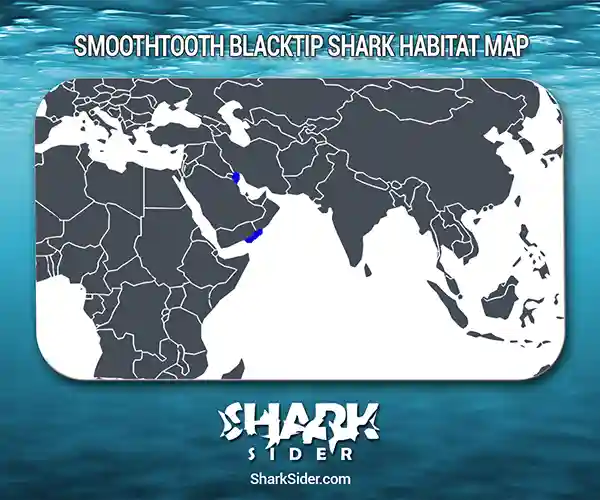The smoothtooth blacktip shark is a requiem shark living in certain places of the Arabian Peninsula. It is very similar in appearance to the blacktip reef shark.
Smoothtooth Blacktip Shark Scientific Classification |
|
| Kingdom | Animalia |
| Phylum | Chordata |
| Class | Chondrichthyes |
| Order | Carcharhiniformes |
| Family | Carcharhinidae |
| Genus | Carcharhinus |
| Scientific Name | C. leiodon |
Description
The largest member of this species recorded was 3.9 ft long. It has a robust build with a short snout, large nostrils covered with skin flaps, and small, circular eyes.
Its mouth is widely arched with short furrows at the corners, inside which there are 16 upper and 14–15 lower tooth rows. They have long, sickle-shaped pectoral fins, triangular pelvic fins, and two dorsal fins, with the first being medium-sized and the second being smaller and opposite to the anal fin.
Dorsally, these sharks are greenish-yellow to greenish-gray with tiny dark dots all over them, while ventrally, they are white. The fins have black tips and a dark mid-line running from the base of the second dorsal fin to the lobe of the upper caudal fin.
Where do they live
Map Of The Smoothtooth Blacktip Shark’s Habitat

The smoothtooth blacktip shark lives in two specific locations – eastern Yemen and Kuwait, 1900 miles apart. In Yemen, it dwells in the Gulf of Aden with a narrow continental shelf 1.6 miles deep cut off from freshwater sources. At the same time, in Kuwait, they live in the Persian Gulf, which is shallow (130 ft) and connected to the Tigris-Euphrates-Karun river system giving it a source of fresh water.
Their habitats are varied from estuaries to coral reefs, which are mostly shallow.
Behavior
Feeding
Smoothtooth blacktip sharks feed mainly on marine catfish but also consume small bony fish.
Reproductive
They are viviparous, giving live birth to pups. These sharks become sexually mature between 3 and 3.9 feet long.
Interactions with humans
The IUCN classifies this shark as “Endangered” or “EN” due to its small range and population. As the waters in the Arabian Peninsula are subject to heavy fishing, these sharks are often caught as bycatch.
